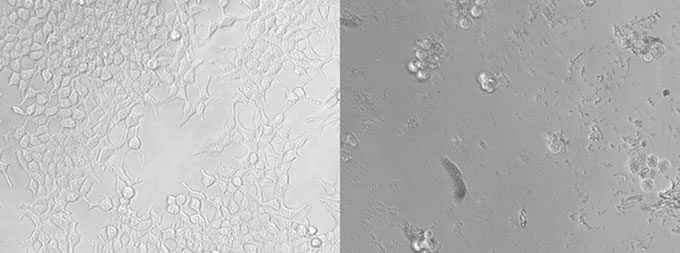A new study reveals that billions of nanometer-sized particles (microplastics) can be released from plastic containers into food when heated in a microwave.
A group of scientists from the University of Nebraska-Lincoln, USA, conducted experiments on polypropylene and polyethylene plastic containers and bags used for children’s food. Both types of plastic are recognized as safe by the U.S. Food and Drug Administration.

Using a microwave to heat food in plastic containers releases microplastics into the food. (Image: Hussain et al., Environmental Science & Technology, 2023).
After 3 minutes of heating in the microwave at 1,000 watts, the research team analyzed the food for microplastics and nanoplastics. They estimated that during this short period, each square centimeter of plastic released 4.22 million microplastic particles and 2.11 billion nanoplastic particles.
“When we eat a certain type of food, we usually only receive information or estimate the calorie count and other nutrients consumed, but I believe it is equally important to know the amount of plastic particles present in that food,” stated engineer Kazi Husain, a specialist in the research team.
Heating water and dairy products in plastic containers in the microwave increases the likelihood of food contamination with microplastics. Plastic particles are always released even at room temperature or in the refrigerator, but significantly less than when using a microwave.

Cultured kidney cells before exposure (left) and after exposure to microplastics and nanoplastics (right) after 72 hours. (Image: Environmental Science & Technology/American Chemical Society).
Currently, scientists are unclear about the toxicity level of microplastics to the human body, but some studies have indicated that microplastic contamination may be linked to digestive issues and other important biological processes in the body.
What is certain is that the less food we consume from plastic containers and bags, the safer we are. Experiments on cultured kidney cells exposed to plastic particles at levels similar to those in microwaves show concerning risks. The research team found that 77% of kidney cells exposed to high levels of plastic died.
Although this does not imply that our kidneys are at risk of exposure to such high levels, it does indicate that there is a potential toxic risk from microplastics and nanoplastics, particularly for organs or bodies that are still developing.
While awaiting further research results and experiments on the harmful effects of plastic particles when they enter the body, we should be aware that this is an issue that needs attention.
Our reliance on plastic containers in daily life can pose dangers if microplastic particles enter the body.


















































